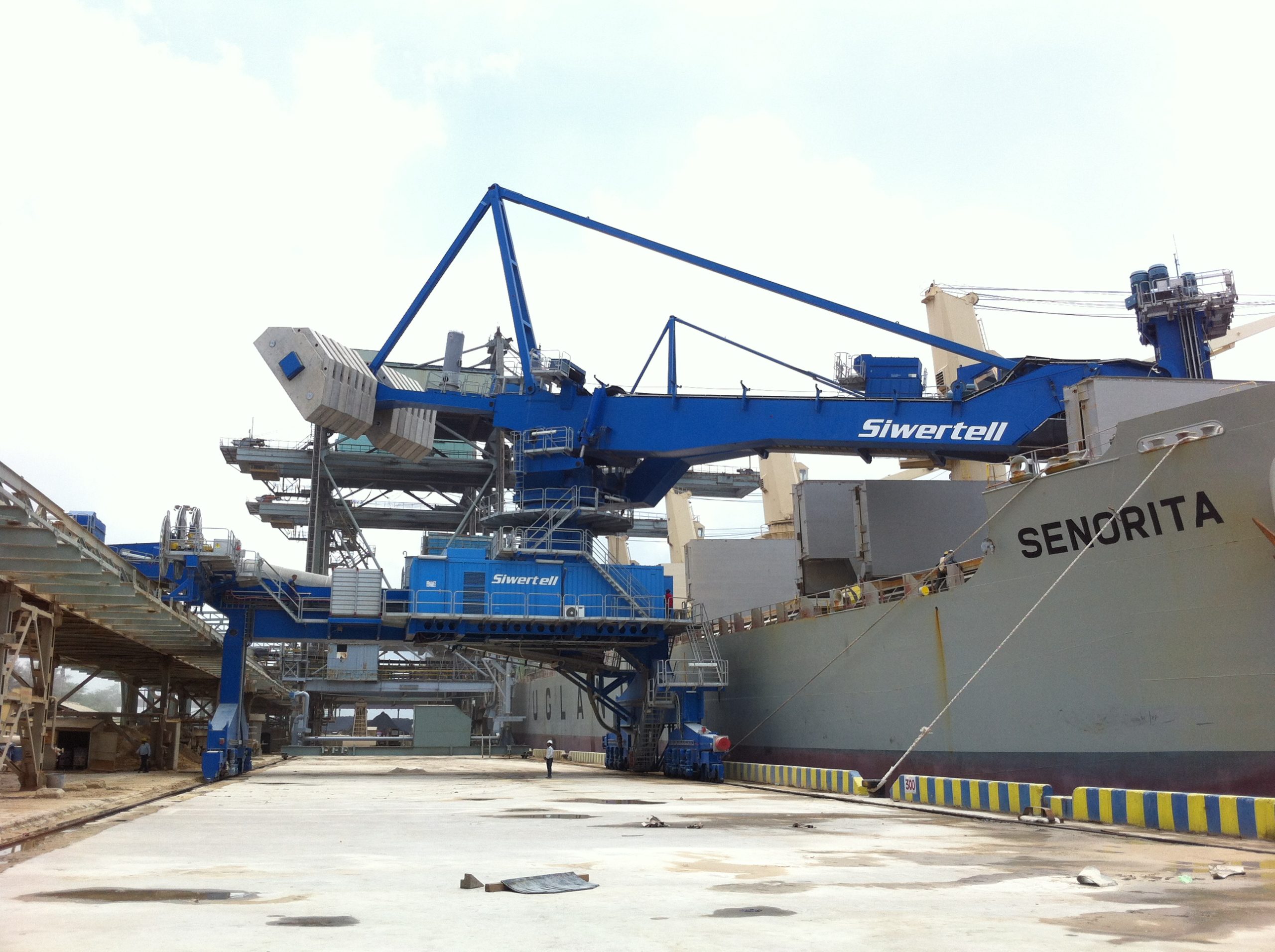Nitrogen+Syngas 370 Mar-Apr 2021
31 March 2021
Syngas News Roundup
Syngas News
NIGERIA
Plan for large scale methanol production
The Nigerian National Petroleum Corporation (NNPC) says that it plans to build a $3 billion methanol plant on Brass Island in the Niger Delta to produce up to 10,000 t/d of methanol using from gas supplied by Shell. A final investment decision was made by NNPC, DSV Engineering and the Nigerian Content Development and Monitoring Board, a state agency set up to ensure Nigerian involvement in oil and gas projects. Around 70% of funding for the project will come from international lenders, including the China Export-Import Bank, the African Development Bank and international commercial banks, with the rest funded from an equity issue. BP has signed a 10 year offtake deal for the plant’s output with the Brass Fertilizer & Petrochemical Company, the entity set up to operate the plant. Construction of the plant is expected to be completed by 2025.
The Nigerian government is hoping to aggregate and monetise ‘stranded’ gas in the Brass Island area, where reserves amount to 10 tcf of gas. The methanol will mainly be for export, though it will also replace all of Nigeria’s 50,000 t/a or so of methanol imports.
NORWAY
Tjeldbergodden methanol plant back onstream
Equinor’s methanol plant at Tjeldbergodden has returned to production following a fire at the plant on December 2nd last year. Equinor says that the fire broke out in the compressor building of the methanol plant, causing the plant and associated air separation unit to be shut down. No-one was injured in the incident. An investigation into the causes of the fire is still under way.
“Our number one priority has been safe and secure start-up of the facility,” said Lena Skogly, plant manager at Tjeldbergodden. “I’d like to thank everyone who contributed to get the facility back on line, both our own employees and external expertise. It takes time to check all technical matters and damage due to the fire. Thorough inspections in the facility, as well as testing and validation of equipment that may have been affected by the fire have been carried out. During these efforts, it’s been important to extract learning from the incident and ensure that we have the technical and operative barriers in place before start-up. This painstaking work makes us confident that the facility will produce in a safe and stable manner.”
Clean hydrogen project
INOVYN, a subsidiary of INEOS, plans to build a new clean hydrogen supply hub at its manufacturing site in Rafnes. The company will build a 20 MW electrolyser to generate clean hydrogen powered by zero-carbon electricity for the Norwegian transport sector. INOVYN is aiming to eventually establish a network of refuelling stations in Norway to provide buses, trucks and taxis with clean hydrogen, and is targeting producing enough hydrogen to fuel up to 400 buses or 1,600 taxis.
NEW ZEALAND
Methanex to close Waitara Valley
Methanex has announced that it plans to close one of its methanol plants in New Zealand, at Waitara Valley, Taranaki, New Zealand, because it has not been able to secure sufficient gas feedstock to keep the facility operating. Gas production from the Pohokura field which feeds the plant has been declining, and the covid pandemic has delayed new drilling and exploration by gas producers in the region. The company said that it would lay off staff and keep the facility on a care and maintenance basis in a safe condition so that it could be restarted should gas become available. Methanex will continue to operate its two methanol plants at Motunui. Waitara Valley has a capacity of 500,000 t/a of methanol, and the two Motonui plants a further 1.7 million t/a of production capacity.
UZBEKISTAN
Technology licensed for MTO project
Versalis, the chemical arm of Italian energy major Eni, has licensed a low density polyethylene/ethyl vinyl acetate unit to be built as part of a new gas to chemical complex based on methanol to olefins technology in the Karakul area of Uzbekistan. Enter Engineering Pte. Ltd. will act as licensee on behalf of Jizzakh Petroleum JV LLC, who will own and operate the LDPE/EVA unit and the entire gas to chemical complex once built.
The contract award follows the September 2020 confirmation of Jizzakh Petroleum as a partner in the MTO gasto-chemicals project, formed in May 2019 via an agreement between Uzbekneftegaz, JSC Uzkimyosanoat, Enter Engineering, and Air Products and Chemicals Inc. Polyolefin capacity will be 500,000 t/a.
GERMANY
Porsche looking to low carbon MTG as a vehicle fuel
Dr. Frank Walliser, Porsche vice president of GT cars and motorsport, has said in a recent interview that cars running on synthetic fuel could deliver an 85% reduction in carbon emissions compared to fossil fuel equivalents, representing lower “well to wheels” emissions than an electric car, once emissions related to manufacturing are factored in. A synthetic fuel should be ready for testing in 2022, Walliser said, adding that this fuel could be used in all of Porsche’s current internal-combustion engines without modifications. The fuel will come from a pilot plant in Chile named Haru Oni, being developed by Porsche and Siemens, which will use wind-generated electricity to electrolyse water into hydrogen and oxygen. The hydrogen will then be combined with carbon dioxide from the air to produce methanol, which in turn can be used to create synthetic gasoline, diesel, or kerosene aviation fuel. Porsche says the plant would produce 130,000 litres (96 tonnes) of fuel by 2022, ramping up to 55 million litres per year (40,000 t/a) by 2024, and 550 million litres per year (400,000 t/a) by 2026. Approximately 40% of the fuel produced will be gasoline, of which Porsche will be the primary consumer initially.
JAPAN
Cow manure to methanol project
A pilot plant is being developed in Sapporo, Hokkaido to convert urine and feces from thousands of dairy cows into methanol via a biogas process developed at Osaka University. Industrial gas supplier Air Water Hokkaido Inc. and contractor Iwata Chizaki Inc., both based in Sapporo, are partnering with the university to establish the plant. Methanol from the process will be used locally as fuel, replacing heavy fuel oil, and will also be used to power fuel cells.
The process dissolves methane from biogas in a transfer fluid and exposes it to ultraviolet light, converting it into methanol and formic acid at normal temperatures and pressures, without production of carbon dioxide. Single pass methanol conversion efficiency has been improved to 14%. The formic acid can be used as an additive for cattle feed, or a source for hydrogen production. The current trial facility is to be expanded into a pilot plant by 2024, and could be rolled out to other areas in and outside Hokkaido by 2030.
AUSTRALIA
Plans for large scale renewable hydrogen plant
Australian natural resources company Province Resources says that it is looking to produce renewable hydrogen from 1GW of wind and solar energy in the Gascoyne region of Western Australia. Primarily a mining company, Province recently acquired Ozexco, which holds exploration license applications for minerals such as salt and potash in the region. The proposed renewables development, HyEnergy, as well as a parallel mineral prospecting plan, would be located in a flat desert area near the town of Carnarvon, where Province Resources aims to create a hydrogen hub, eventually making up to 60,000 t/a of hydrogen and 300,000 t/a of ammonia, for sale to Japan and other Asian markets. In a first stage, a pilot hydrogen and ammonia plant is envisaged at Carnarvon. The company also says that it plans to investigate the potential for the blending hydrogen into the Dampier-Bunbury natural gas pipeline.
INDONESIA
Is coal gasification the way forward for Indonesia?
As the world increasingly turns away from burning coal for power, Indonesia, the world’s largest exporter of thermal coal, is left considering what to do with its abundant coal reserves. The answer may be provided by a number of recent project announcements for coal gasification projects. In December, state-owned Tambang Batubara Bukit Asam, also known as PTBA, announced a $2.1 billion coal to methanol and downstream dimethyl ether (DME) project in partnership with state oil and gas major Pertamina and US-based Air Products and Chemicals. Construction is due to begin on the new plant in mid-2021 near PBTA’s coal mine at Tanjung Enim on South Sumatra Province. Commercial operations are targeted to start in 2025, with a production capacity of 1.4 million t/a of DME, using 6 million t/a of coal as feedstock – around 20% of PTBA’s annual output. The DME would be used as an LPG blendstock or substitute, although questions have been raised about its potential cost compared to imported LPG.
Now Bumi Resources, Indonesia’s largest coal producer, has announced its own coal gasification project. Its subsidiary Kaltim Prima Coal is looking to partner with Ithaca Resources and – once again – gasification technology supplier Air Products to build a coal-to-methanol facility in East Kalimantan, consuming another 8.7 million t/a of coal. Air Products would invest about $2 billion “to build, own and operate” the facility, could be up and running as soon as 2024. They intend to supply the methanol to the government’s expanding biodiesel program. Bumi is also conducting a pre-feasibility study for a second coal-tomethanol project with a potential on-stream date of 2025. Bumi is aiming to settle a $1.7 billion debt in 2022 and conclude a mandatory bonds-to-equity conversion by 2024 following its debt restructuring process in 2017.
Indonesia’s other major coal company, Adaro Energy, is also looking at a coal gasification project, again producing methanol, or potentially methanol to olefins. There are also underground coal gasification (UCG) pilot projects which would generate syngas being developed by Kideco Jaya Agung, Indominco and Medco Energi Mining Internasional.
DENMARK
Topsoe building electrolyser manufacturing facility
Haldor Topsoe says it will invest in a manufacturing facility to build large-scale solid oxide electrolyser cell (SOEC) electrolysers to meet future customer needs for green hydrogen production. The facility will produce electrolysers with a total capacity of 500 MW per year, with the option to expand to 5 GW per year. Topsoe claims that its proprietary SOEC electrolysers offer superior performance in electrolysis of water into hydrogen, compared to standard alkaline or PEM electrolysers. The facility is expected to be operational by 2023.






